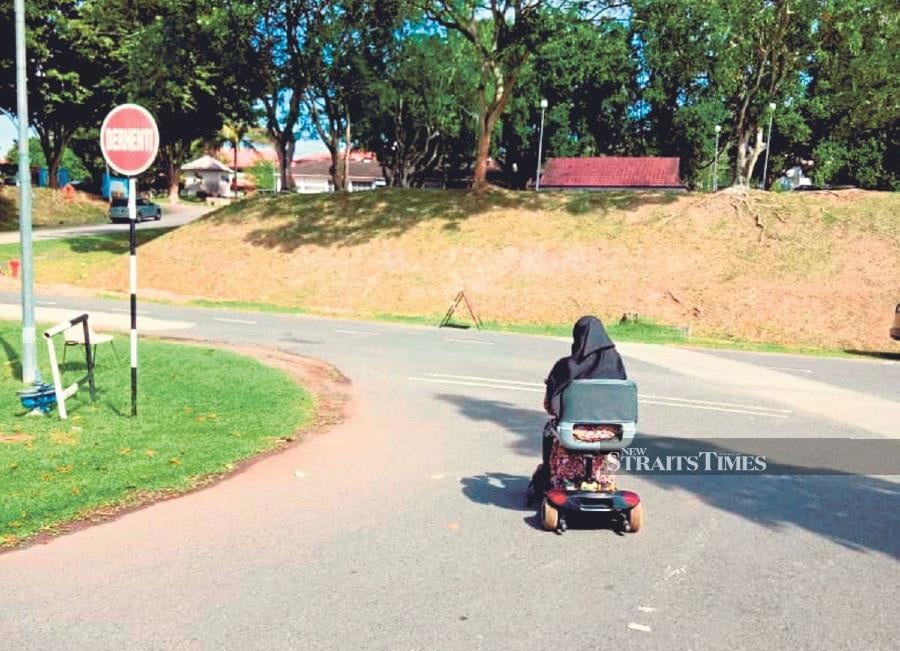LETTERS: Students with disabilities face a multitude of challenges in pursuing their dreams.
Inadequate facilities, including inaccessible buildings and restrictive ramps, make it difficult for them to navigate campus life.
Additionally, higher education institutions may struggle to provide sufficient units or centres to meet the diverse needs of such students.
Digital learning tools can be inaccessible, particularly in online learning environments. They may encounter difficulties accessing websites, e-learning platforms or documents independently.
Teaching methods and learning materials, such as course materials, might not cater to all students with disabilities, some of whom require alternative formats like Braille.
Diverse test patterns and evaluations are also essential to accommodate the varying requirements of these students, who may need additional assistance, such as extra time or alternative formats, to succeed.
The students may face discrimination due to their disabilities. These can lead to social exclusion, disrupt their experiences and increase stress and anxiety.
The costs associated with disability and technological needs can be a significant burden on some students, who may need to attend medical appointments and therapeutic sessions.
Several initiatives can be introduced to ensure that people with disabilities receive adequate support and incentives.
1. REGULARLY evaluate and improve campus infrastructure to ensure full accessibility. Instal clear signs indicating accessible paths and facilities.
2. ENSURE digital resources, such as learning management systems and course materials, comply with accessibility standards.
Higher education institutions should provide training for academics and staff on creating digital content that is accessible to students with disabilities.
3. IMPROVE disability support services by allocating adequate funding for assistance tools.
4. PROMOTE a culture of participation, diversity and mutual respect on campus through awareness campaigns and workshops.
5. PROVIDE mental health support services that are sensitive to the unique needs and challenges of students with disabilities, while promoting open dialogue on mental health on campus.
6. INTEGRATE efforts between institutions, community welfare departments and local authorities to ensure public transportation is accessible.
7. ESTABLISH a fund to help cover the expenses related to equipment and accommodation.
The Higher Education Ministry provides financial assistance to students with disabilities in higher education institutions. But the institutions still need to improve physical accessibility, offer comprehensive financial assistance and develop a culture of inclusion and diversity on campus.
Universiti Tenaga Nasional, for example, offers scholarships through various setups, such as the Uniten Zakat Trust Fund and the Tenaga Nasional Foundation.
8. ENCOURAGE faculty members to produce course materials that are accessible to students with disabilities.
9. HELP students set up a flexible academic schedule that accommodates medical appointments and other requirements, such as physiotherapy sessions.
10. EDUCATE students about their rights and available support and offer workshops to build self-confidence.
11. DEVELOP alternative assessment methods and provide guidance on managing requirements during assessments.
12. PROMOTE a diverse and inclusive curriculum that reflects the experiences and contributions of individuals, while actively promoting their participation and self-confidence.
13. MAINTAIN open communication with students about their ever-changing needs, ensuring flexibility and adaptability.
14. PROVIDE training for staff and faculty members and collaborate with stakeholders to share best practices and promote people-with-disabilities education. Institutions should get feedback from students and involve them in the decision-making process.
Enabling individuals with disabilities to access higher education is a shared responsibility. Institutions must strive to overcome obstacles, while the community must work towards equal opportunities for all students to ensure they can pursue their academic dreams and contribute to a more diverse nation, regardless of physical ability.
DR AZLEEN ILIAS
Senior lecturer, Department of Accountancy and Finance, Universiti Tenaga Nasional
The views expressed in this article are the author's own and do not necessarily reflect those of the New Straits Times





